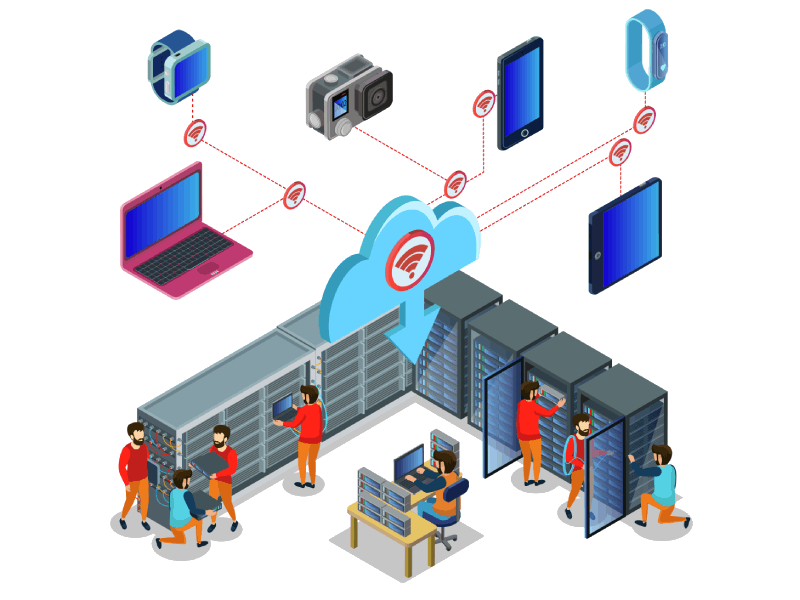Network Setup
Network setup involves the design, configuration, and implementation of a reliable and efficient network infrastructure to connect devices and facilitate communication and data exchange within an organization. It encompasses various components, such as routers, switches, firewalls, access points, and network cables, to create a secure and high-performing network environment.
Key elements of network setup include:

1. Network Design
Creating an optimized network architecture that considers factors like scalability, bandwidth requirements, network segmentation, and security considerations.
2. Hardware Installation
Deploying and configuring network devices, including routers, switches, firewalls, access points, and other networking equipment, according to the network design.
3. Network Configuration
Setting up IP addressing, subnetting, VLANs (Virtual Local Area Networks), routing protocols, and other network parameters to enable proper communication and connectivity.
4. Security Implementation
Implementing appropriate security measures, such as firewalls, intrusion detection/prevention systems, VPNs (Virtual Private Networks), and access controls, to protect the network against unauthorized access and potential threats.
5. Quality of Service (QoS)
Configuring QoS parameters to prioritize network traffic, ensuring optimal performance for critical applications and services.
6. Testing and Optimization
Conducting thorough testing and performance tuning to identify and resolve any network issues, optimizing network performance and reliability.

In summary, our network setup services provide:
- Network design tailored to your organization's needs
- Installation and configuration of network hardware
- Secure network implementation with proper security measures
- QoS configuration for optimal performance
- Thorough testing and performance optimization
By entrusting your network setup to our skilled team, you can establish a robust and secure network infrastructure that meets your organization’s connectivity and communication requirements.

